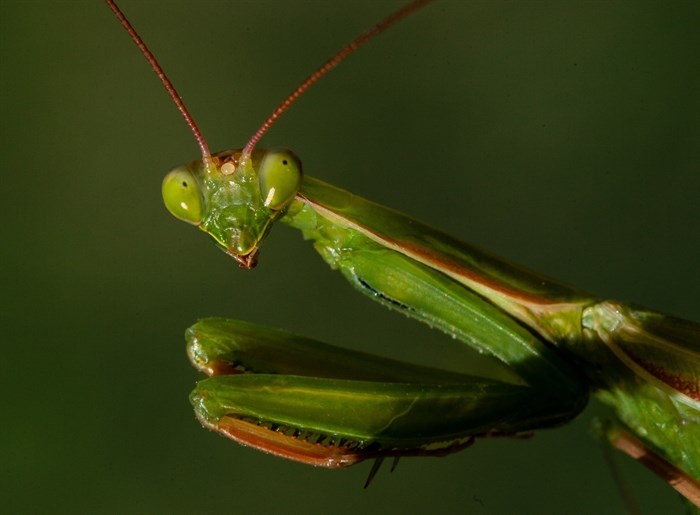
This stunning photograph of a mantis was taken in a garden in Okanagan Falls at the end of June.
Image Credit: SUBMITTED/ Facebook/ Andy Morrissey
August 15, 2025 - 4:00 AM
Mantids are being spotted in Kamloops and the Okanagan lately, and the creatures are not only fascinating looking, they also have eyebrow-raising behaviours.
The large insects look like aliens with triangular heads and widely spaced eyes and giant forelegs they use to seize prey. The prayer-like position of their folded forelegs has given them the common name praying mantis.
The insects are carnivorous and mostly prey on arthropods including insects, spiders and centipedes. Mantids are camouflaged and ambush hunters that wait motionless for the right to time to seize a victim which they eat alive, according to the Canadian Encyclopedia.
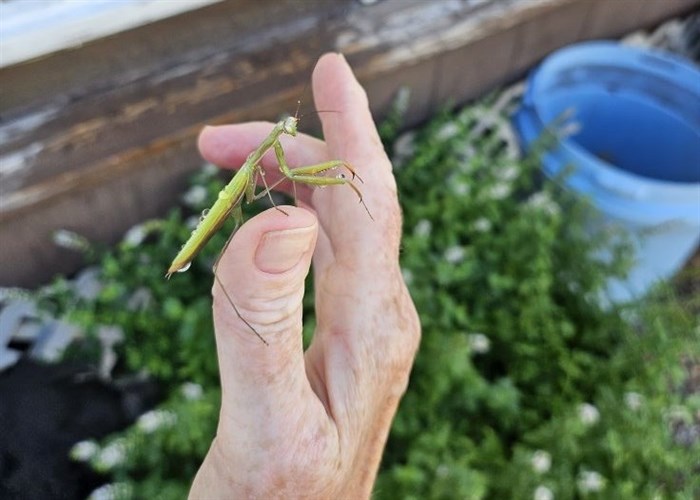
A praying mantis crawls on a gardener's hand near Oliver in August.
Image Credit: SUBMITTED/ Donna-Lee Arnold
They mate aggressively as they hunt. The female mantids eat the males before, during and after copulation. Male mantids have evolved to be cautious while mating, approaching females slowly and freezing when she moves, then running away after mating.
Mantids are the only insects with binocular vision like humans, and they have a flexible neck that allows them to look over their shoulders. When alarmed, mantids rear up in threatening postures.
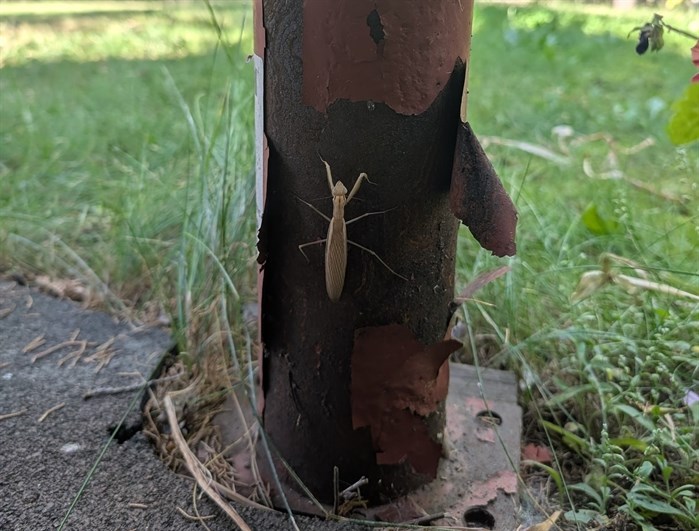
A praying mantis spotted in Blind Bay in August.
Image Credit: SUBMITTED/ Alexa Worthington
Most species of mantids live in the tropics. There are only three in Canada and two of them are found in BC.
The European mantis was accidentally introduced to New York State from Europe in 1899 and spread into parts of Canada. It was later introduced tin the Okanagan in an effort to control grasshoppers.
The ground mantid is the only native species in the country and can only be found in the dry grasslands of the South Okanagan.
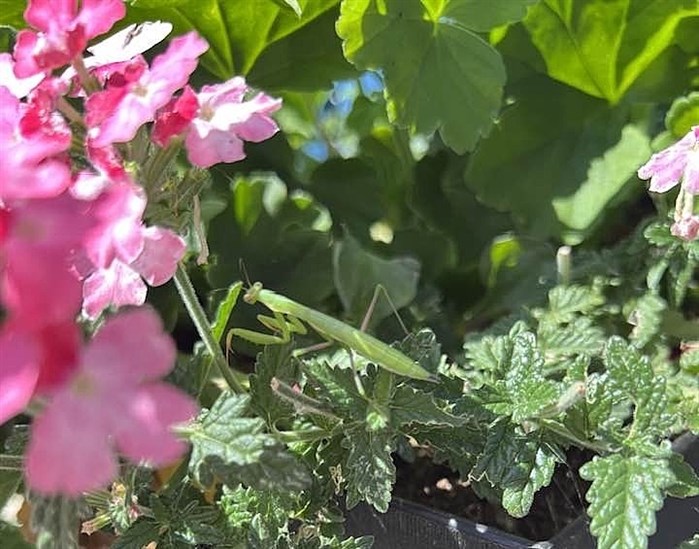
A mantis purchases on flowers in Kamloops in summer.
Image Credit: SUBMITTED/ Barry Fawcett
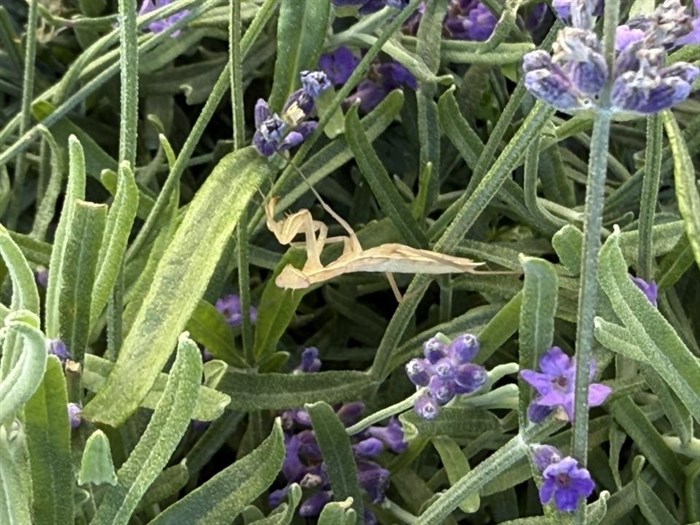
A mantis clings to leaves in Kelowna in July.
Image Credit: SUBMITTED/ Cheryl Chilton
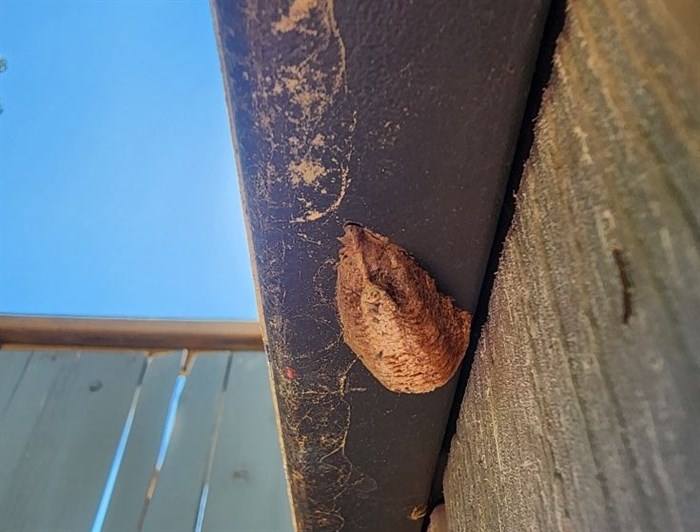
A mantis egg sac is attached to a roof in Kelowna.
Image Credit: SUBMITTED/ Melissa Yuen
To contact a reporter for this story, email Shannon Ainslie or call 250-819-6089 or email the editor. You can also submit photos, videos or news tips to the newsroom and be entered to win a monthly prize draw.
We welcome your comments and opinions on our stories but play nice. We won't censor or delete comments unless they contain off-topic statements or links, unnecessary vulgarity, false facts, spam or obviously fake profiles. If you have any concerns about what you see in comments, email the editor in the link above. SUBSCRIBE to our awesome newsletter here.
News from © iNFOnews, 2025